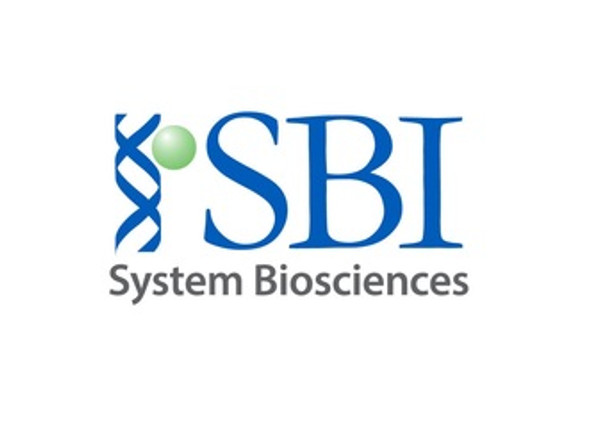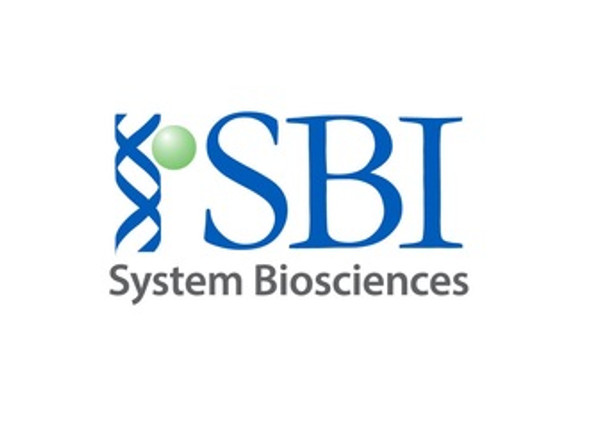System Biosciences
Cas9 Nickase: MSCV-hspCas9(D10A)-EF1-GFP SmartNickase Lentivector Plasmid + LentiStarter Packaging Kit
- SKU:
- CASLV225PA-KIT
- Availability:
- Usually Shipped in 5 Working Days
- Size:
- 1 Kit
- Shipping Temperature:
- Blue Ice/ Dry Ice
Description
Cas9 Nickase: MSCV-hspCas9(D10A)-EF1-GFP SmartNickase Lentivector Plasmid + LentiStarter Packaging Kit. Cat# CASLV225PA-KIT. Supplier: SBI System Biosciences
- Conduct genome editing and engineering in difficult-to-transfect cell lines
- Drive Cas9 expression from the MSCV promoter, for high expression in hematopoietic and stem cells
- Check transduction efficiencies with the GFP marker
- Perform in vivo engineering of model organisms
- Supports synthetic biology applications, gene- and cell-based therapy development, and genome-wide functional screening
Products

Overview

- Conduct genome editing and engineering in difficult-to-transfect cell lines
- Drive Cas9 expression from the MSCV promoter, for high expression in hematopoietic and stem cells
- Check transduction efficiencies with the GFP marker
- Perform in vivo engineering of model organisms
- Supports synthetic biology applications, gene- and cell-based therapy development, and genome-wide functional screening

How It Works
Genome engineering with CRISPR/Cas9
For general guidance on using CRISPR/Cas9 technology for genome engineering, take a look at our CRISPR/Cas9 tutorials as well as the following application notes:
CRISPR/Cas9 Basics
Through careful selection of the target sequence and design of a donor plasmid for homologous
recombination, you can achieve efficient and highly targeted genomic modification with CRISPR/Cas9.
The system

Cas9 protein—uses guide RNA (gRNA) to direct site-specific, double-strand DNA cleavage adjacent to a protospacer adapter motif (PAM) in the target DNA.
gRNA—RNA sequence that guides Cas9 to cleave a homologous region in the target genome. Efficient cleavage only where the gRNA homology is adjacent to a PAM.
PAM—protospacer adapter motif, NGG, is a target DNA sequence that spCas9 will cut upstream from if directed to by the gRNA.
The workflow at-a-glance
DESIGN: Select gRNA and HR donor plasmids. Choice of gRNA site and design of donor
plasmid determines whether the homologous recombination event results in a knock-out,
knock-in, edit, or tagging.
CONSTRUCT: Clone gRNA into all-in-one Cas9 vector. Clone 5’ and 3’ homology arms into HR
donor plasmid. If creating a knock-in, clone desired gene into HR donor.
CO-TRANSFECT or CO-INJECT: Introduce Cas9, gRNA, and HR Donors into the target cells
using co-transfection for plasmids, co-transduction for lentivirus, or co-injection for mRNAs.
SELECT/SCREEN: Select or screen for mutants and verify.
VALIDATE: Genotype or sequence putative mutants to verify single or biallelic conversion.














